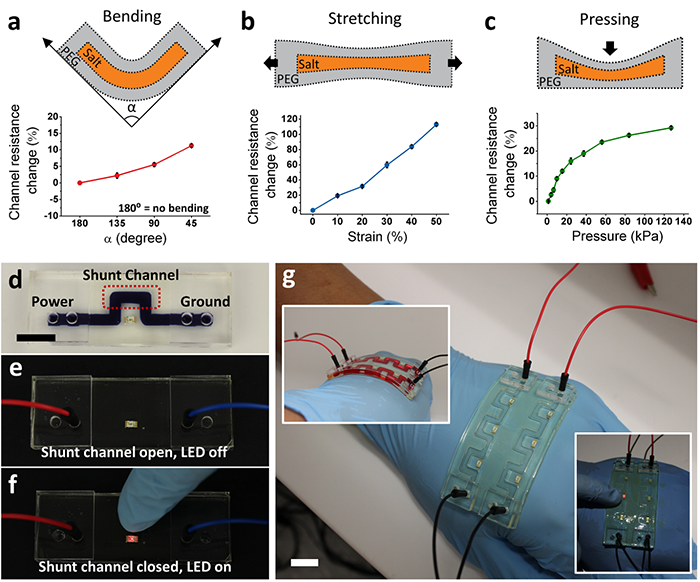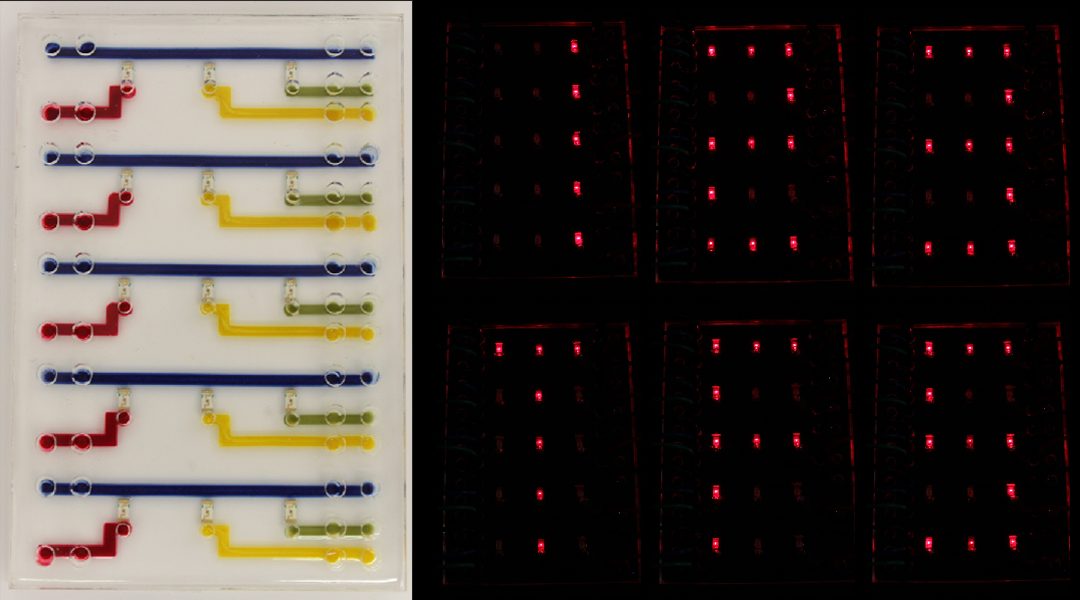For many, electronic devices are recognized as being made of metals, hard plastics and other rigid materials. In the field of bioelectronics and wearable electronics, the need for soft, biomimetic materials for the fabrication of flexible, biocompatible electronic devices is necessary toward the development of future living–electronic hybrid systems, which work synergistically together.
The production of materials that are flexible, stretchable, transparent and biocompatible is a challenge to overcome in the pursuit of such bioelectronic devices. These requirements increase the design complexity, and device size, while also affecting the device conductivity. Most conductive materials in use, do not meet the requirements to be compatible with human tissues, which makes devices constructed from such materials unsuitable for implantable devices and long-term wear.

Hydrogel ionic circuits based on ATPS. More information here.
Ionically conductive hydrogels may hold the key to producing bioelectronic devices that meet the design criteria. These hydrogels provide the required biocompatibility, transparency and are stretchable. They offer a mechanical match to human tissue, and could be engineered to offer degradability depending on the application.
As conductors, the hydrogels work to utilize ionic charge transport, which eliminates electron-to-ionic current conversion at biological interfaces. Moreover, they enable safe and seamless interaction with biological tissue. However, existing hydrogel conductors either cannot form stable interconnect patterns in aqueous environments, or possess low conductivity.
A team of researchers from Tufts University lead by David L. Kaplan and Fiorenzo G. Omenetto, demonstrate complex, aqueous-stable, hydrogel ionic circuits towards bioelectronic devices.
The hydrogel ionic circuit design could be mechanically reprogrammed and modulated after fabrication, and possessed both the required transparency and stretchability.
The researchers demonstrated that the circuits were fully compatible with living systems, and in in vivo experiments showed that they could be used to stimulate muscle electrically. In vitro tests showed localized electrical stimulation of cultured cells using a hydrogel ionic electrode array.
For more information about these hydrogel ionic circuits, including videos (Supporting Information), click here.

















